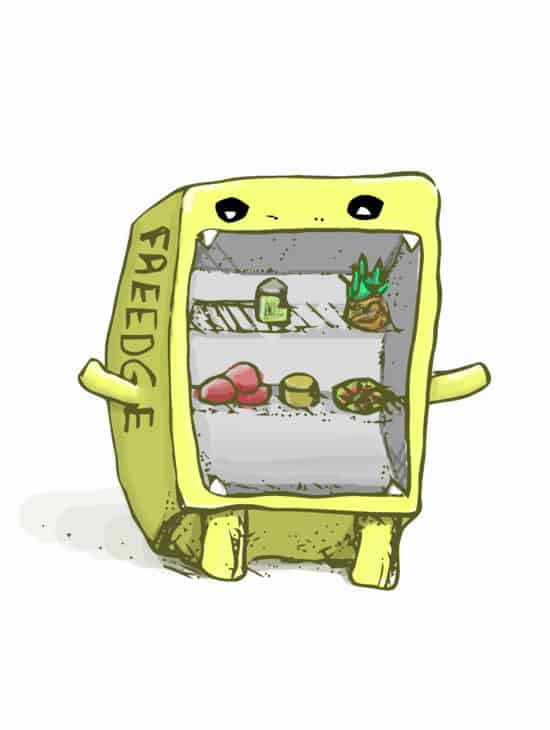For local activist Nadja Smith-Hanson, viable food sources and food sustainability needs to be more than just a table-top discussion. She plans to make this happen with one simple thing — fridges.
Since December 2016, Smith-Hanson has taken it upon herself to make free food more accessible in Saskatoon by installing communal fridges, or what she calls freedges, in key neighbourhoods.
Currently, Smith-Hanson has placed two freedges, one at The Better Good on Broadway Avenue, and the other at AKA Artist-Run Gallery on 20th Street. In the future, she hopes to see freedges in libraries and even on campus.
libraries and even on campus.
The inspiration and direction for the freedge project came to Smith-Hanson in the summer of 2016, while she was travelling in Montreal and saw how fridges were being used.
“The thing that struck my interest was a guy in a suit who went to the fridge and took some buns from it, and then a guy who had been begging on the street went and grabbed a container of something. It was interesting to see who was using the fridge,” Smith-Hanson said.
The foundational idea behind Smith-Hanson’s project is that the food provided should be accessible to anyone who needs it, without judgement.
The level of accessibility of the freedges effectively sets this venture apart from other food collection sources, like the Saskatoon Food Bank & Learning Centre, where one is required to show proof of residency within the city and can only take food out once every two weeks. Moreover, since the food is refrigerated, an assortment of perishable food items, such as fruits and vegetables, are available too. Smith-Hanson’s motivation for the project is simple in nature.
“I like to eat and I want other people to eat. We should all be able to eat,” Smith-Hanson said.
Smith-Hanson has ensured that both freedges are safe and up to health standards. In January, she held an event called Creating a More Sustainable Saskatoon at D’Lish by Tish Café, where she had Saskatoon Health Region representative Michael Newell, among other guests, vouch for the freedges’ safety and legitimacy.
Despite her considerable accomplishments in regards to sustainable food sourcing within Saskatoon, Smith-Hanson realizes that she can’t transform the city alone.
“A community movement like this needs to have a bigger following than just me,” Smith-Hanson said.
For Smith-Hanson, this extra support doesn’t necessarily have to come in the form of freedges, but in a host of other endeavours striving for sustainability in the city. The first thing that people can do, in her mind, is to compost.
“It’s a visual of what we throw out. It makes food less like garbage and puts it in a different category. You’re also more aware of what you’re throwing out,” Smith-Hanson said.
For Smith-Hanson, changing the conception that food is disposable is crucial for Saskatoon to become a more sustainable city. In order to supplement the good of composting, she believes dumpster diving is a good option too.
Smith-Hanson has recently updated Saskatoon’s dumpster diving page on Facebook, where she and a group of dedicated divers let one another know when and where good food can be found.
However, Smith-Hanson believes that the most important thing a person can do to develop a sustainable relationship with food is to think critically. Whether it’s making a conscious effort to eat local or thinking about what you actually need from the store, Smith-Hanson wants people to be more mindful about their relationship with food.
Smith-Hanson hopes the people of Saskatoon can acknowledge the role that food has in our lives, respect it and eat in the best way possible.
“Food is something that is so intertwined in all of our lives; we all need to eat,” Smith-Hanson said.
—
Tanner Bayne
Graphic: Jeremy Britz / Photo Editor